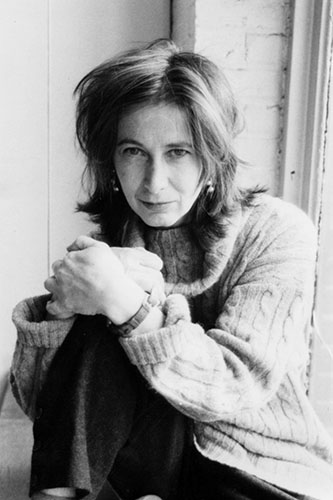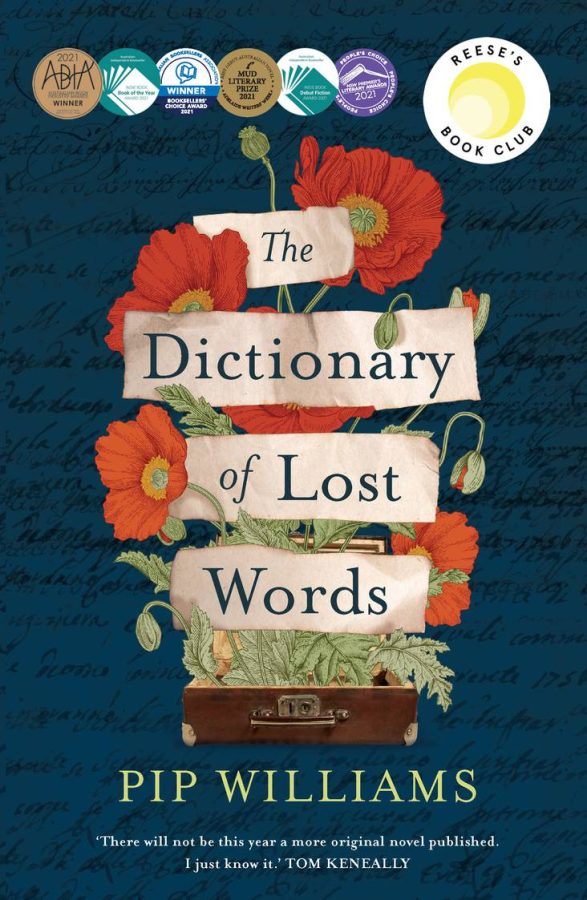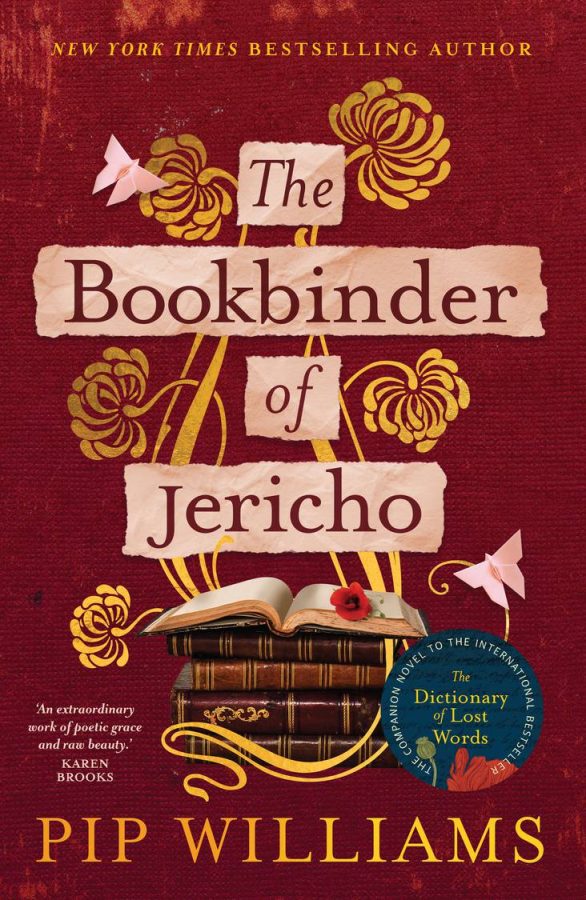All these embarrassing female-type stories seemed to be popping into my mind, and then into my writing since V. was away: stories about sex, abuse, rape, abortion, marriage, divorce, infection, kids. I want to make a collection of them and call it, If You’re a Girl. What a great title, say all the girls: Louise, Andrea, Rose, Eileen, Vicky, etc. Is it about pre-pubescence? said Paul Cherry snidely. No, I said, immediately on the defensive, it’s, you know, a state of mind.
– Ann Rower, If You’re A Girl (1990).What I am interested in here is the model of writing and talking about oneself as a means of abstracting one’s own experience. But what kind of an activity is this? What consequences does it have for one’s concept of truth, if one is trying to put oneself into the position of observer? The feeling of distance that opens up to one’s own experiences perhaps explains the sense of unease that accompanies this speech.
– Karolin Meunier, Return to Inquiry (2011).
I started the Native Agents series for Semiotext(e) in 1990, when Semiotext(e) was well-known for publishing French theory, with the idea of transferring some of French theory’s legitimacy to some friends in New York, all of them women, who could best be described as post-New York School writers. That is, they wrote about all kinds of things in the first person with a disinterested but always interesting candour. Appropriately enough, the first two books in the series were the late Cookie Mueller’s Walking Through Clear Water in a Pool Painted Black (1990) and Ann Rower’s If You’re A Girl. Both these books have turned out to be classics.
For the past several years, the wonderful writer and filmmaker Chloe Griffin has been painstakingly retracing Mueller’s steps, from Baltimore to San Francisco, from Provincetown to New York and Berlin, to write a biography that will be published in Germany next year. As you may know, Cookie Mueller was a much-loved actress, writer and downtown New York personality, described by John Waters as ‘a writer, a mother, an outlaw, an actress, a fashion designer, a go-go dancer, a witch-doctor, an art-hag, and above all, a goddess’. Mueller died of AIDS in New York at age 40 in 1989. In the months before her death, she tried to arrange for publication of her collection of stories. But despite her celebrity, none of the agents or editors she knew wanted to publish the book as she wrote it. They wanted her to change this or that, and she was in no condition to do that, and perhaps didn’t want to.
I heard her read at the St. Marks Poetry Project, and was moved by her work and her situation. At that time, I was living with Sylvère Lotringer, the founder and then sole editor of Semiotext(e). I was fairly ignorant about French theory and ambivalent about what I did know, but I suddenly realised that whatever cachet Semiotext(e) held at the time could be used to help Cookie Mueller. Ann Rower was my best friend at the time. I thought she was a genius, with her big heart and her sly, dry, out-the-side-of-her-mouth cynical observations. Rower taught English at School for Visual Arts in New York. Though you would never know it to look at her, she had a Ph.D from Columbia in Renaissance literature. As Beth Hanson as recently written about Rower’s work:
I would have loved to have her for a sister, to show me the ropes. She’s hip, thoughtful, funny and was friends with people like Ginsberg and Orlovsky. I love the way she faces down abusive friends (‘You’ve gained weight’), rude waitstaff, abusive editors (‘Love your perfume’) with aplomb. If you’re a girl, aplomb is one thing you really need: you can use it to make that rapist, that editor, back down. Aplomb: confidence and poise. She does not explain, analyze, plead, confess or fuss. She narrates; her transfiction is like O’Hara’s poetry: I did this and I did that. This is what gives it its poise. She is so nonchalant, so reticent in the narration of her own life, that I think she may be some kind of saint.
Ann Rower had been writing for years without any career strategy, and wanted a book to come out, and it was unlikely anyone else was going to do this. So you could say that Native Agents began – like most independent presses and imprints; zines, blogs, vlogs; vehicles for expression in whatever media – from a social situation, out of love, but also for vengeance against the status quo and what was, and was not, considered important. A few months after Ann and Cookie’s books came out, we published Lynne Tillman’s collection of essays written through her invented persona of ‘Madame Realism’, a collection of Kathy Acker’s early unpublished writings, Hannibal Lecter, My Father (1991), and a collection of Eileen Myles’s narrative poems, Not Me (1991). As Myles famously writes in ‘An American Poem’, pretending to be one of the Kennedys:
You are the New Americans.
The homeless are wandering
the streets of our nation’s
greatest city. Homeless
men with AIDS are among
them. Is that right?
That there are no homes
for the homeless, that
there is no free medical
help for these men. And women.
That they get the message
— as they are dying —
that this is not their home?
And how are your
teeth today? Can
you afford to fix them?
How high is your rent?
If art is the highest
and most honest form
of communication of
our times and the young
artist is no longer able
to move here to speak
to her time … Yes, I could,
but that was 15 years ago
and remember — as I must
I am a Kennedy.
After publishing five or six of these books, I realised they had something in common. Yes they were all written by women – yes they were all written in the first person – and like practically all books and films of their time, they included writing about sex. (Since these first-person narratives were written by women, this necessarily meant that the books included narrative first-person writing about sex by a woman, a fact that tended to obscure practically everything else, but more on this later.) What seemed most important to me was not the fact of the ‘I’ but the way it moved through the text and the world. It was an active, public ‘I’ – the ‘I’ of American realist fiction, from Mark Twain to Melville to Burroughs and Kerouac and Alexander Trocchi. I did not begin writing myself for another few years, but I learned how to write largely by reading and editing the first Native Agents books.
I edited twelve books in this vein for the series, including books by younger west coast writers like Michelle Tea, but by 2002 I felt that the series had done what it set out to do. Hedi El Kholti joined us a co-editor of Semiotext(e). His interest in European queer writers of the post-1968 era suggested a new path. We published books by Tony Duvert, Grisiledis Real, Pierre Guyotat, and as the series continues to evolve, we have published books by contemporary writers Abdellah Taia, Mark von Schlegell and Veronica Gonzalez Pena. Within the narrow and circumscribed world of American literary fiction, Native Agents asserts a singular taste, although we haven’t yet found the words to describe our aesthetic coherently. The books we are drawn to are more conceptual than experimental, more warm than cold, more discursive than lyrical, often queer, never conventionally male heterosexual, more autobiographical than not.
When I Love Dick was published in 1997, mid-way through the first iteration of Native Agents, it was more ridiculed than praised: ‘a book not so much written as secreted’ (Artforum); ‘a stream of fawning love letters so intrusive they amount to epistolary stalking’ (New York Magazine), etcetera. What people reacted against most strongly was the idea that the ‘privacy’ of the recipient – who remained unnamed in the book – would be violated.
In 2006, when the book went out of print, Hedi decided to produce it again in a ‘critical’ edition, as we have done with some of the French theory texts. Eileen Myles and Joan Hawkins wrote essays, and strangely, nine years after its first publication, it was received as a new book. This time things were different. A new, largely female readership welcomed the book as an example of writing one’s way out of classically straight-female dilemmas; a way of regaining one’s center in the unbalanced equation of romance and dating. This time, the book was championed, not reviled, for its ‘invasion of privacy’. A new generation of young women had already wholeheartedly rejected these rules.
How did this happen? For a while, it seemed like internet culture was collapsing the boundaries between professional and amateur writing and criticism, and this collapse favoured girls. Writing on blogs like Kate Zambreno’s Frances Farmer is My Sister and Jackie Wang’s Serbian Ballerinas and Ariana Reines’ Tumblr and Emily Gould’s Things I Ate That I Love seamlessly folded into more general interest online lit-magazines like the Rumpus and HTMLGiant. In their insightful and detailed readings of young, female, identity-based work, scholars like Anna Poletti and Anna Fisher recognise the philosophical self-reflexivity and agency entailed in these works. As Fisher writes about ‘adolescent drag artists’ Amber Hawk Swanson, Kate Gilmore and Ann Liv Young, these artists
act out an adolescent confrontation. Rather than actually being or behaving like adolescent girls, these artists appropriate and stage the adolescent as a serviceable figure for articulating a more loosely ordered and multifarious contemporary feminism, organized by tactical dis-identification with both the mother figured by second-wave feminism, and the daughter figured by third-wave feminism.
I think there has been a huge shift among younger women in the last half-decade, comparable maybe to the change in public opinion about legalised marijuana. This shift has occurred across the culture, from the ground up, online, from the great expanses of blog-land, in entertainment media, and in New York publishing and media circles. Like the illogic of soft-drug prohibition, certain conditions of patriarchy are simply no longer tolerable.
There is a great energy that comes with this shift, which can be seen in various start-ups at all levels: Sarah Nicole Prickett’s Adult, the first feminist sex magazine that is both feminist and sexy; Jane Pratt’s xoJane; Jezebel and the Hairpin; Gawker and the Awl’s female subsidiaries. Younger women like Dayna Tortoricci have enacted huge editorial changes at n+1, which serves as a kind of high-culture feeder into mainstream New York publishing. The culturally-current online magazine the New Inquiry was founded by three female editors. As Jezebel founding editor Anna Holmes has said of her magazine: ‘Basically, we wanted to make the sort of women’s magazine we’d want to read.’
These feminist start-ups carry more cultural currency than the grudging inclusion of more female content in nearly-archaic publications like the Atlantic. Three years ago, writers and editors Emily Gould and Ruth Curry started an online, e-book boutique called Emily Books. As they recall:
Emily: My book And the Heart Says Whatever had come out in 2010, and basically hadn’t done anything. Ruth had finished one year of an MFA program –
Ruth: I was pretty sure I was going to drop out, I just hadn’t done it yet. I was having a really bad summer. I’d gotten fired from my waitressing job and was basically living off unemployment and credit cards, but around the time that Emily’s book came out and I started school, ebooks were something people were talking about.
Emily: I remember, [agent] Jim Rutman told me that half the sales of The Tiger’s Wife were electronic –
Ruth: Something crazy. And the author was 23, it was her first book, it was exactly the thing you want to have happen. Now, The Tiger’s Wife wasn’t the kind of independent book that we liked, but in the back of my mind at least, was this idea: I wish there was someplace that I loved shopping that also sold e-books. And Emily said, well, what if we did it?
Emily: At some point we came to realize that all of the books we wanted to publish had something in common, and they were the antithesis of The Tiger’s Wife, the literary fiction best seller, of what we’d been taught in school represented ‘good writing’.
Their first project was the e-publication of Ellen Willis’ second-wave feminist classic, No More Nice Girls (1992), long out of print. They went on to republish books by Ariana Reines, Eileen Myles, Sarah Schulman, Elena Ferrante, Meghan Daum, Sigrid Nunez, Muriel Spark and Renata Adler.
As Emily Gould told me:
We just had the idea of selling the kind of books that we liked. We didn’t realize what that actually meant until we were five or six books in … we were trying to write a description, and we thought anything we could write would be better than using the f-word. We didn’t want feminism as a marketing category. We wanted to be able to say these books are not memoirs, but they’re not novels, they’re not heterosexual but not queer; they’re feminist, but they’re not internet feminist … I think what we ended up doing is just try to describe every book as accurately as we could, and hope it would accrete into something … and that took a few years.
Editing Kate Zambreno’s book Heroines for Semiotext(e) Active Agents in 2012, I was strangely ambivalent about the fierce desire she expresses in the second half of the book to see more women, herself included, knighted by corporate publishing as geniuses, in the manner of Ben Lerner and Jonathan Franzen. It seemed she was bestowing a glamour upon mainstream publishing that barely exists beyond the New York Times Book Review. The rigorous debate that occurred in that world during the mid-twentieth century era has largely migrated to the world of contemporary art. As we know, publishers like Knopf, Little Brown, and Farrar Straus and Giroux heavily promote two or three fiction titles each season. The rest of the list might just as well have appeared with an independent press, or even online.
In a recent column in Frieze, Lynne Tillman hilariously challenges the question: ‘Can a woman write the Great American Novel?’ As she points out, the whole notion of the ‘Great American Novel’, is a conceit that became prominent in the mid-twentieth century in relation to war novels. As she writes: ‘The GAN is a dated artifact: it is actually a time stamp, [fraught with] nostalgia … for those good old days when America was top dog.’
What matters much more than the imprint under which a title appears, is the writer’s position and following. Marie Calloway’s story ‘Adrian Brody’, posted on her own blog, attracted more attention in New York publishing circles and beyond than many first novels. Unaided by any professional promotion or publicity machine, the Invisible Committee’s short book The Coming Insurrection (2009) sold more than 50 000 copies after being condemned by Fox News’ Glen Beck as ‘the most evil book in America’. When the initial reception of Calloway’s work turned into a sneer-fest, writers like Zambreno, Emily Gould, Sheila Heti and Lisa Carver closed ranks to support her. As Gould wrote:
Why do women who aren’t afraid to humiliate themselves appall us so much, and why do we rush to find superficial reasons to dismiss them (‘she’s crazy’ ‘she’s a narcissist’ ‘she’s young’ ‘she’s a famewhore’)? I think in part because they pose a threat to the social order, which relies on women’s embarrassment to keep them either silent or writing in socially accepted modes.
According to Emily Gould and Ruth Curry, two indisputably New York publishing insiders, the quintessential reader of Emily Books is a subscriber in Melbourne, Australia. Elanor McInerney works as a medical receptionist, reads books, blogs about writing and culture, and travels. Recently, they received a submission from a woman writing under the name Elsa Williams, who has a Tumblr, Worn Smooth. Gould read it and thought it would be perfect as their first original publication; Curry wasn’t so sure. They sent it to McInerney in Melbourne, and she cast the deciding ballot.
This article has been funded by the Centre for the Book at Monash University. It is based on a talk given while Chris Kraus was a Visiting Scholar in the Faculty of Arts at Monash University earlier this year.
This article was updated on 23 October 2014 to incorporate the reference to Elsa Williams. It originally stated that Emily Books’ first original publication was How To Get Into The Twin Palms by Karolina Wacklawiak, a novel that was first published by Two Dollar Radio and reissued by Emily Books.
References
Adult.
The Awl.
Anna Watkins Fisher, ‘Like a Girl’s Name: The Adolescent Drag of Amber Hawk Swanson, Kate Gilmore, and Ann Liv Young,’ TDR: The Drama Review, 56:1 (Spring 2012).
Gawker.
Emily Gould, Things I Ate That I Love.
The Hairpin.
HTMLGiant.
Jezebel.
Eileen Miles, ‘An American Poem,’ Poetry Foundation.
n + 1.
The New Inquiry
Ariana Reines.
Jane Pratt, xoJane.
The Rumpus.
Semiotext(e).
Lynne Tillman, ‘A Fictional Past,’ Frieze, no.163 (May 2014).
Jackie Wang, Ballerinas Dance with Machine Guns.
Kate Zambreno, Frances Farmer is My Sister (invited readers only).



